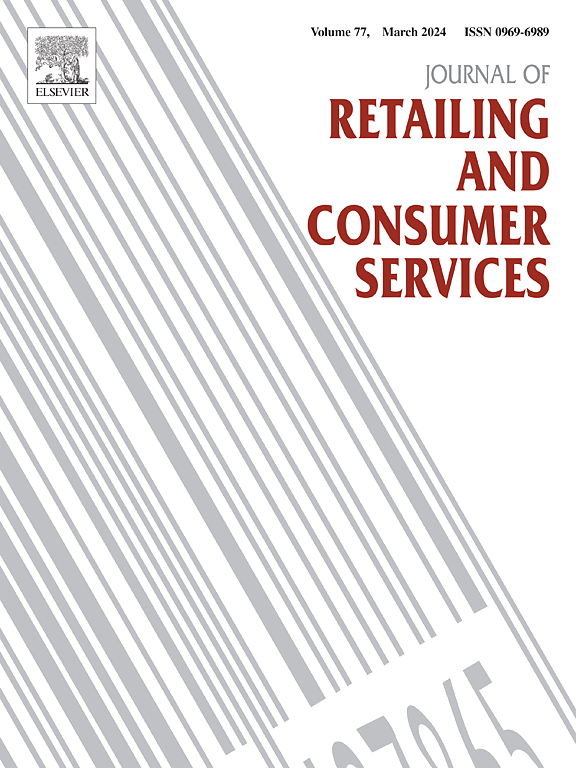Decoding virtual influencer endorsement using machine learning: The role of virtual influencer, posting, and disclosure characteristics
IF 11
1区 管理学
Q1 BUSINESS
Journal of Retailing and Consumer Services
Pub Date : 2025-06-12
DOI:10.1016/j.jretconser.2025.104366
引用次数: 0
Abstract
Virtual influencers are promising marketing tools, which have increasingly provided endorsements on social media platforms. However, salient empirical research remains insufficient, and how to effectively promote users' social media engagement with virtual influencer endorsements is unclear. This study draws on expectation violation theory to develop a social media engagement determinants model for virtual influencer endorsement and explores how virtual influencer characteristics, posting characteristics, and disclosure characteristics impact users' social media engagement. Using data collected from 9665 virtual influencer endorsement posts on Instagram, we employed 10 different sets of machine learning algorithms to train and test the model. Our analysis reveals that LightGBM is the best-performing algorithm for predicting social media engagement. Combining the LightGBM and Shapley Additive Explanations (SHAP) models, we find that anthropomorphism is the most important predictive factor and is negatively related to social media engagement, followed by text length, AI identity declaration, brand disclosure, and item name disclosure. In contrast, basic information cues, persona, purchase channel disclosure, content dynamism, and co-creators’ followers have significant positive effects on social media engagement. Our findings provide theoretical implications for influencer endorsement research and offer practical implications for marketers to optimize virtual influencer endorsement strategies in terms of virtual influencer selection and design, posting design, and information disclosure.
使用机器学习解码虚拟影响者背书:虚拟影响者的角色、发布和披露特征
虚拟网红是很有前途的营销工具,它们越来越多地在社交媒体平台上提供代言。然而,突出的实证研究仍然不足,如何通过虚拟网红代言有效促进用户的社交媒体参与尚不清楚。本研究利用期望违背理论建立了虚拟网红背书的社交媒体参与决定因素模型,并探讨了虚拟网红特征、发布特征和披露特征如何影响用户的社交媒体参与。利用从Instagram上9665个虚拟网红代言帖子中收集的数据,我们采用了10套不同的机器学习算法来训练和测试模型。我们的分析表明,LightGBM是预测社交媒体参与度的最佳算法。结合LightGBM和Shapley加性解释(SHAP)模型,我们发现拟人化是最重要的预测因素,与社交媒体参与度呈负相关,其次是文本长度、人工智能身份声明、品牌披露和商品名称披露。相比之下,基本信息线索、人物形象、购买渠道披露、内容动态和共同创作者的追随者对社交媒体参与有显著的积极影响。研究结果为网红代言研究提供了理论启示,并为营销人员优化网红代言策略提供了实践启示,包括虚拟网红的选择和设计、帖子设计和信息披露。
本文章由计算机程序翻译,如有差异,请以英文原文为准。
求助全文
约1分钟内获得全文
求助全文
来源期刊
CiteScore
20.40
自引率
14.40%
发文量
340
审稿时长
20 days
期刊介绍:
The Journal of Retailing and Consumer Services is a prominent publication that serves as a platform for international and interdisciplinary research and discussions in the constantly evolving fields of retailing and services studies. With a specific emphasis on consumer behavior and policy and managerial decisions, the journal aims to foster contributions from academics encompassing diverse disciplines. The primary areas covered by the journal are:
Retailing and the sale of goods
The provision of consumer services, including transportation, tourism, and leisure.

 求助内容:
求助内容: 应助结果提醒方式:
应助结果提醒方式:


